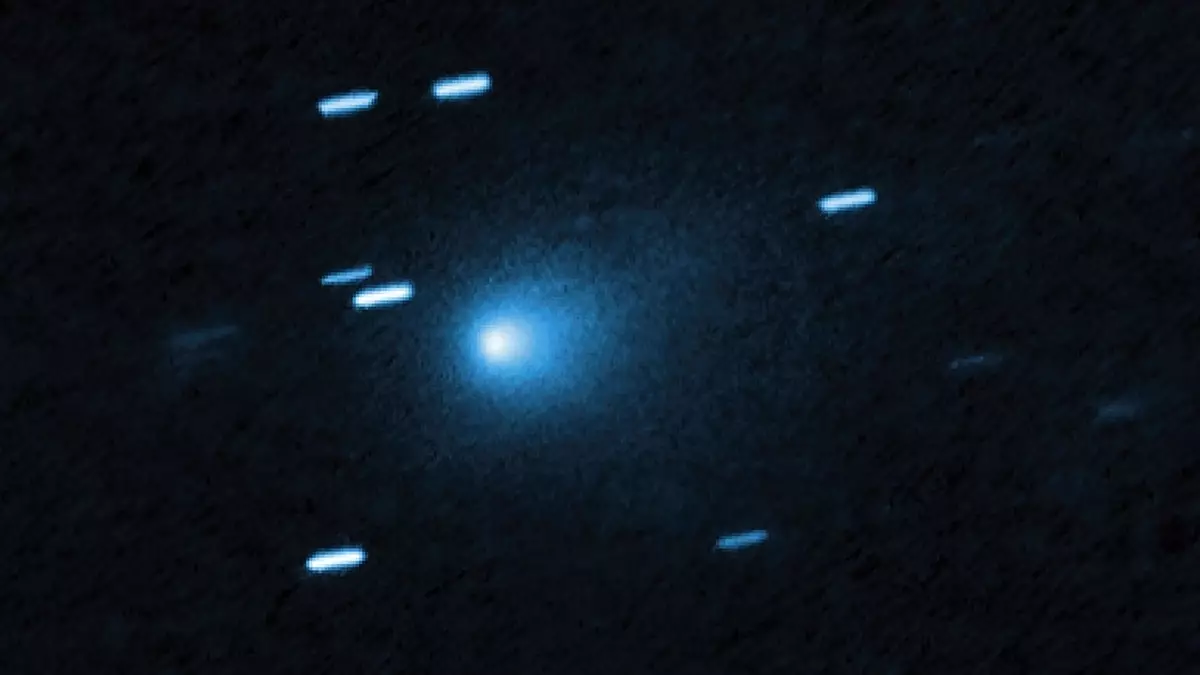Copyright unilad

A Harvard physicist has listed the 10 ways space object 3I/ATLAS deviates from the norm. The mysterious, fast-moving object was first spotted hurtling towards us by a NASA-funded telescope in July. Last week, it made its closest approach to the Sun, passing as near as 210 million kilometers away. And next month, on December 19, it's set to have its nearest encounter to Earth - but don't worry, the freaky space object will still be 270 million kilometers away from us. Previously, scientist Avi Loeb had sounded the alarm that 3I/ATLAS could be ‘possibly hostile’ amid fears it could wreak havoc on planet Earth. In his latest blog post, Loeb highlights the 10 ways in which 3I/ATLAS is behaving unusually. It comes as Loeb invited Kim Kardashian to join the investigation into the unusual space object after she revealed she thought the the historic 1969 moon landing was faked. The 10 3I/ATLAS anomalies The first difference Loeb highlights is the space object's unusual path around the Sun. It is moving backwards - also known as retrograde - compared to the other planets, but its path is still close, within around 5 degrees, to the same flat plane where planets orbit, called the ecliptic. Loeb says there’s only about a 0.2% chance this would happen by random chance. Loeb says that between July and August, 3I/ATLAS showed a 'jet' or streak of gas and dust pointing toward the Sun, called an anti-tail. Normally comet tails point away from the Sun because sunlight and solar wind push material outward. Loeb says this one isn’t just an optical illusion from our viewing angle. Size and speed The solid core - nucleus - of 3I/ATLAS seems to be about a million times heavier than ʻOumuamua and a thousand times heavier than Borisov, the only other known interstellar objects. Yet, it’s moving faster than both. Loeb says there’s less than a 0.1% percent chance of that combination happening naturally. Solar system route 3I/ATLAS’s path took it surprisingly close to Venus, Mars, and Jupiter, and when it got closest to the Sun, Earth couldn’t see it because it was behind the Sun. Loeb calls this 'fine-tuned,' saying there’s only a 0.005 percent chance of such timing by accident. A band of the object's gas supposedly shows more nickel than iron, which is unusual, as most natural materials have more iron. Loeb notes this ratio is similar to industrial nickel alloys, and the amount of nickel relative to cyanide gas is also way higher than in any known comet. Loeb adds that only about four percent of the gas coming off 3I/ATLAS is water, even though comets are normally made mostly of ice. 3I/ATLAS appears to be giving off carbon dioxide and other gases instead of much water vapor, meaning it formed in a very different kind of environment, or it’s made of different stuff altogether. Light from 3I/ATLAS is polarized, or, vibrating in certain directions, in a very strange way known as extremely 'negative polarization.' This has never before seen in any comet before, not even interstellar Borisov. Loeb says this likelihood is less than one percent. The direction in the sky from which 3I/ATLAS arrived is within about 9 degrees of where the famous 1977 'Wow! Signal' - a mysterious radio signal - came from. Loeb says that coincidence would happen by chance only 0.6 percent of the time. As it neared the Sun, 3I/ATLAS suddenly got brighter much faster than expected and appeared bluer than the Sun, which is highly unusual since comets usually look yellowish or reddish. Acceleration Loeb said 3I/ATLAS 'exhibits non-gravitational acceleration' which 'requires massive evaporation of a sixth of its mass.' However telescopes don’t yet show clear evidence of that mass loss. What NASA have said about 3I/ATLAS Scientists are continuing to monitor 3I/ATLAS over the coming months. NASA says the object is simply an interstellar comet and is nothing to worry about. "Comet 3I/ATLAS poses no threat to Earth and will remain far away," the US space agency clarified.



